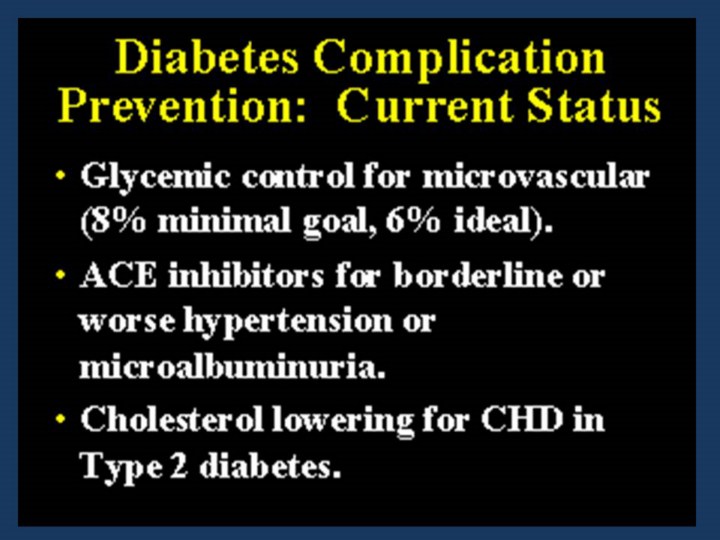Search inside of Supercourse and lectures in HTML and PPT format
 |
 |
front |1 |2 |3 |4 |5 |6 |7 |8 |9 |10 |11 |12 |13 |14 |15 |16 |17 |18 |19 |20 |21 |22 |23 |24 |25 |26 |27 |28 |29 |30 |31 |32 |33 |34 |35|36 |37 |38 |39 |40 |41 |42 |43 |44 |45 |46 |47 |48 |49 |50 |51 |52 |53 |54 |55 |56 |57 |58 |59 |60 |61 |62 |review |
 This slide summarizes these findings where epidemiology has lead us in terms of prevention. Clearly glycemic control is vitally important for the prevention of microvascular complications and the ADA goal of 8% is a perfectly reasonable goal to achieve for all diabetics. How far one pushes below 8% towards the normal 6%, is partly dependent on the age and overall risk factor profile of the diabetic subject. Vigorous attempts to keep the blood sugar below 6% in the elderly may be disadvantageous as they are unlikely to survive long enough to develop the microvascular complications. On the other hand, a young Type 2 diabetic developing diabetes in their late 40’s or early 50’s microvascular glycemic control would be relatively more important. However, in addition to glycemic control, ACE inhibition and vigorous cholesterol lowering for CHD in Type 2 diabetes is also strongly advocated as indicated. Trials underway will hopefully provide answers in terms of cholesterol lowering for the primary prevention of macrovascular events. |
|